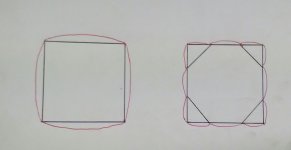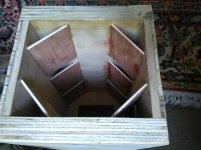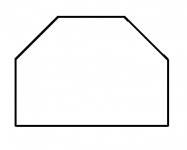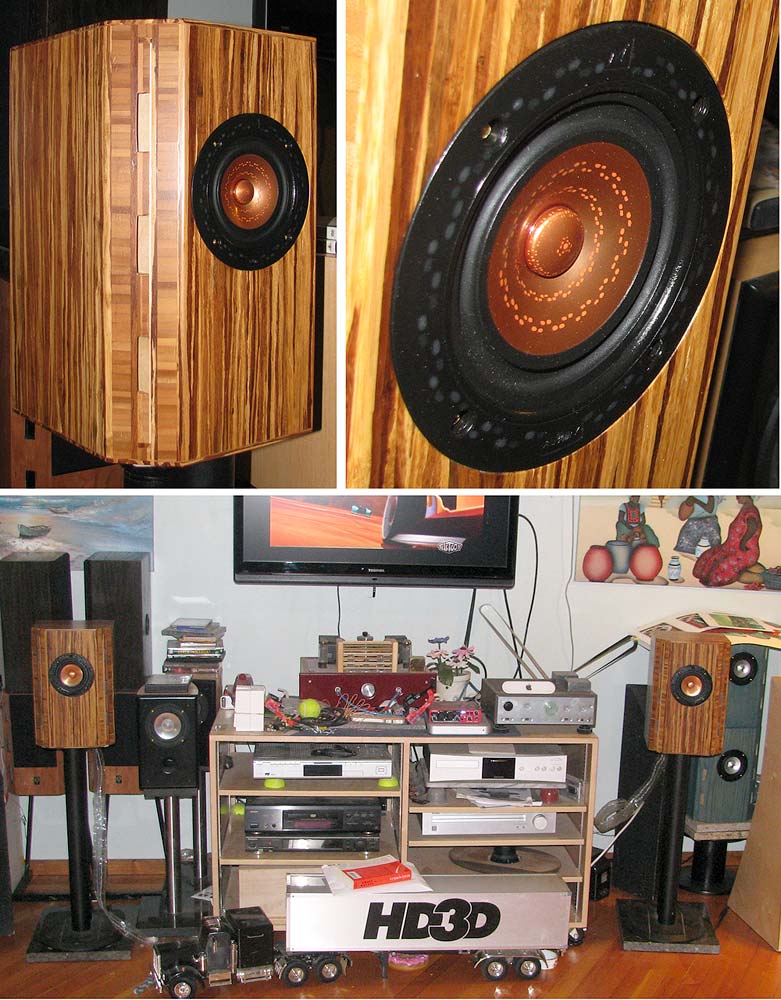A rectangular cabinet is strongest at the corners. The sides act as a brace. To some extent adding an angle/side to the enclosure should have the same effect. I assume that this has been studied and can be shown mathimaticly. However, my Google skills have failed me. Does anyone know of a calculator for this type of thing?
My current example of what I am talking about is building a speaker 30" h x 14" w x 12" d. If I were to miter the side panels at 6" back from the baffle so that the back of the speaker were smaller how much would this make the side panels stronger/stiffer?
My current example of what I am talking about is building a speaker 30" h x 14" w x 12" d. If I were to miter the side panels at 6" back from the baffle so that the back of the speaker were smaller how much would this make the side panels stronger/stiffer?
If I'm understanding you correctly and the side panels only go back, say, half way.. and if the tendency of the panel to flex there where the angled piece joins, and the strength of that angled piece in the direction the side panel wants to flex are as good as putting a back corner there then effectively cutting the dimension in half will make a significant contribution to strength, which is important in a cabinet.
This doesn't mean it will be immune to vibration.. and making angled joints can sometimes be tricky to do well. Therefore braces and panel damping may still be a good thing.
This doesn't mean it will be immune to vibration.. and making angled joints can sometimes be tricky to do well. Therefore braces and panel damping may still be a good thing.
I am not sure what you are describing. Are you asking if a trapezoidal shaped cabinet will strengthen the box.
No, but the top and bottom panels should be slightly less prone to moving because of the shape.
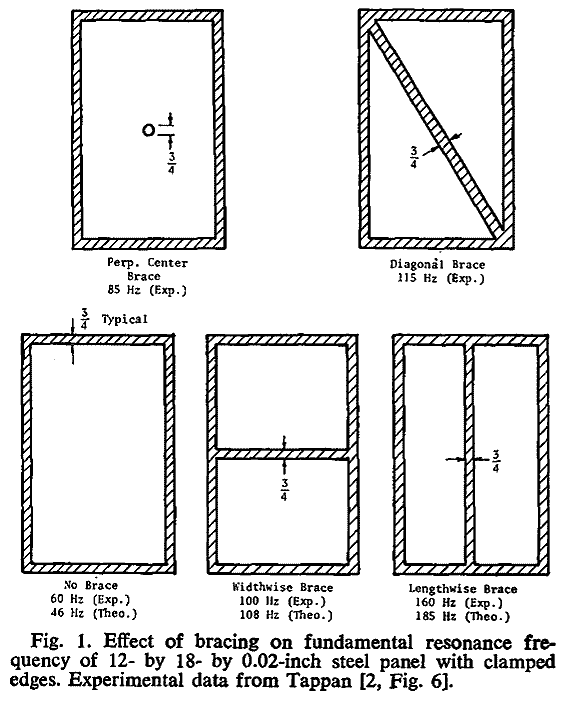
Higher is generally better.
dave
No, but the top and bottom panels should be slightly less prone to moving because of the shape.

Higher is generally better.
dave
I think he's talking about making a more faceted cab with large flats (very much like the simpler Olson diffraction shape you've posted over the years).
I am not sure what you are describing. Are you asking if a trapezoidal shaped cabinet will strengthen the box.
No, but the top and bottom panels should be slightly less prone to moving because of the shape.
Higher is generally better.
dave
Can you explain what that drawing is showing? Link to the original work?
augerpro, while Dave may correct me I see it as a single panel, held at the edges and showing the benefit of attaching a reinforcing rail in different directions, and judging its effectiveness at reducing panel movement by measuring an increase in resonance frequency.
augerpro, while Dave may correct me I see it as a single panel, held at the edges and showing the benefit of attaching a reinforcing rail in different directions, and judging its effectiveness at reducing panel movement by measuring an increase in resonance frequency.
Ok thanks. So the frequency listed is the new resonant frequency with the brace shown? "Theo" must mean theoretical Fs, and "Exp" what he actually measured?
Last edited:
A set of 22.5’ corner lock router bits and a few strap clamps and your golden….probably be best to assemble the rectangular section first letting the glue set up before adding the backside. Joinery :: Miter Glue Joint :: Lock Miter Router - 22.5 Degree Glue Joinery Router Bit Set - 1/2" Shank - Yonico 15220
They make them in 45’ also……makes life so much easier!
They make them in 45’ also……makes life so much easier!
This is what I thought.
Thank you. This is exactly what I mean. I am only on my phone so adding drawing to the post is a pain. I will be using mitered corners an am wondering how much this will act like a brace? I am planning on using less that a 45 degree angle.
Ok thanks. So the frequency listed is the new resonant frequency with the brace shown? "Theo" must mean theoretical Fs, and "Exp" what he actually measured?
Exactly, pretty obvious.
dave
8 short sides vrs 4 longer ones. As if you placed a pr of braces on the rectangular panel. If the octagon was irregular it wuld be a bit better. Like an off-centre brace.
If you actually do an octagon, that shape should give you a lower diffraction signature.
dave
If you actually do an octagon, that shape should give you a lower diffraction signature.
dave
A set of 22.5’ corner lock router bits and a few strap clamps and your golden….
Cal has posted an example picture a number of times.
dave
6 sides, 5 of them shorter, so yes it will improve things. Even bertter if you put the "big chamfers" on the front for a lower diffraction signature.
dave
Duanebrow mentioned he wanted to use less than a 45’ angle but in that configuration wouldn’t 45’ be the strongest option?
You can custom cut locking corners on a table saw at different angles but it’s much more of a pita……you could also use biscuits to join odd angles.
You can custom cut locking corners on a table saw at different angles but it’s much more of a pita……you could also use biscuits to join odd angles.
- Home
- Loudspeakers
- Multi-Way
- How effective adding an angle to the side at strengthening an enclosure
